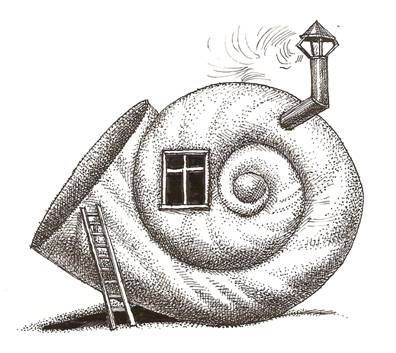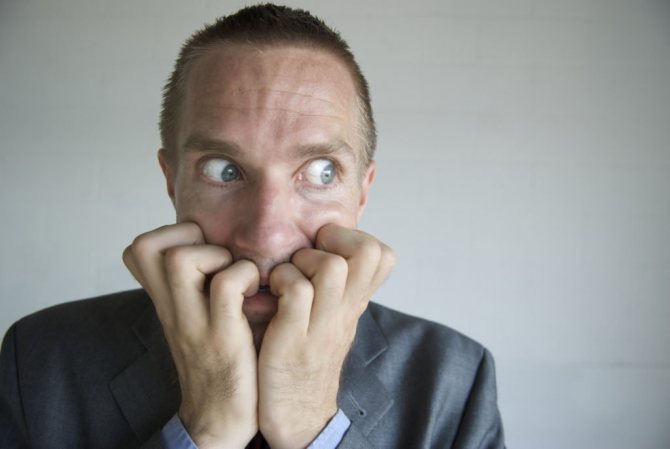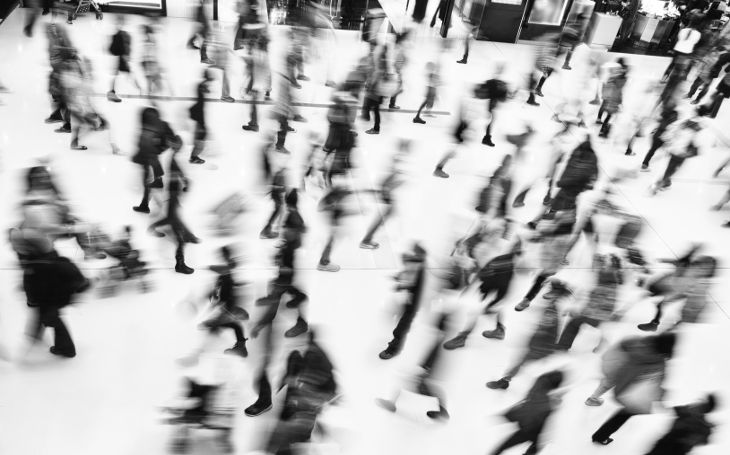Reasons for developing a fear of going outside
The reasons that create the fear of leaving the house on the street are different. This may be a hereditary predisposition - 20% of those suffering from this neurosis have close relatives with a similar disorder. An increased level of anxiety and low self-esteem, which forces one to avoid contact with other people, also causes a feeling of fear of open space. This group also includes people with disabilities who only feel safe at home.
The cause of symptoms of fear of leaving the house on the street can be the stress experienced. A person who has survived a disaster or witnessed it may later become panicky about the repetition of a similar situation and hide from it.
If you are afraid to go outside, this may be the result of an exaggerated fear of death. Open space is associated with increased danger to life.
Causes of nervous disorder
Scientists are researching the causes of agoraphobia, but no consensus has emerged on this matter. There are only a number of factors that can trigger the appearance of a phobic disorder:
- negative psychological experience, which forms the understanding that outside the home a person is in danger and cannot influence the situation (drunken brawl, attack, terrorist attack);
- various mental illnesses (schizophrenia, manic syndrome);
- the presence of other phobias (social phobia, fear of death, fear of contracting a fatal disease, etc.);
- presence of problems with spatial orientation;
- increased emotionality, social vulnerability;
- problems with the vegetative-vascular system;
- pregnancy;
- untreated childhood fears;
- alcoholism, drug addiction;
- long-term use of certain medications.
Fear of public places can be triggered by physical health problems: lack of a limb, disability. Agoraphobia can be caused by untreated childhood neurosis. A child lives in a fictional world; he often sees things that are not really there, giving life to inanimate objects. A child may be afraid to leave the house due to excessive parental care. Some parents incorrectly convey information about the dangers that await them on the street. Children may develop:
- fear of door handles;
- fear of open doors.
Such mental disorders require timely treatment using a set of measures to correct fear.
The main signs of a person’s fear of going outside
This disease has its own symptoms, which are especially pronounced at the beginning of the process, when a person is still poorly aware of what is happening to him. The prospect of leaving home causes the following basic symptoms of fear of leaving the house:
- instant increase in heart rate;
- feeling of heat with redness of the skin to a purplish hue;
- a sharp increase in blood pressure, even in people who do not have hypertension;
- weakness in the legs is so strong that it robs a person of the ability to move;
- difficulties with orientation in space - a person ceases to understand why he needs to leave the house alone, where he should go and what to do;
- a person stops communicating with friends and acquaintances if this means leaving home and going alone to places with large crowds of people;
- the thought of the prospect of leaving the house causes panic horror.
Subsequently, the patient begins to remember these attacks and can externally control his behavior. But self-control does not solve the problem, but only temporarily masks it.
Agoraphobia, I can’t go outside alone, panic attacks.
Neuroses
This information is for general information purposes only. If you experience any of the listed disorders, it is better for you to seek advice from a psychotherapist.
THE ESSENCE OF THE PROBLEM:
CONTENT OF THE SERVICE QUESTIONNAIRE “Psychotherapy psychotherapist online”: I can’t go out alone, I have a panicky fear of going far from home. I start to feel dizzy and out of breath. How to treat?

ANSWER: This disorder is called agoraphobia. Possibly in combination with panic attacks. This is a neurotic anxiety disorder that can be overcome with a combination of medication and psychotherapeutic treatment. A psychotherapeutic program for overcoming agoraphobia involves a gradual change in attitude towards the “exit” situation, and it is aimed at developing a sense of trust in one’s own internal resources. It is usually carried out by a psychotherapist, and in most cases, even without medications. On your own, you can start practicing the following exercises. 1. In a state of absolute relaxation - 10-15 minutes after listening to calm music and taking medicine - with your eyes closed, begin to imagine? how you leave the threshold of your own home. Just beyond the threshold - no further. At the slightest discomfort, you can again, in your imagination, return to your home. With each exercise, gradually lengthen the time you spend outside the house - beyond the threshold. When imagining this situation does not cause discomfort, you can begin to increase the distance at which in your imagination you move away from home. When in your imagination will you be able to stay at a sufficiently long distance from home? You can proceed with real experiments in the same sequence. First increase the time, then the distance. 2. Find a specific “anchor” point in your home. That is, you are not held by the whole house, but by some specific point - this could be the corner of the bedroom, or the kitchen doorknob, or something else, but always in the form of a specific point-object. Search criterion - at this point, or next to it, you experience the greatest feeling of comfort and safety. You must define it precisely as a “point”. Not as a “chair” or “bathtub”, but to concretize this place to the minimum size, say, 1 centimeter. Under the conditions of the first exercise (relaxation), in your imagination you can “materialize” this point. How to pick it up and move it to another place in the house. Check that the experiment was a success - in the new place where you moved this point, you should experience the maximum sense of security.

Do this exercise until you feel confident that you yourself can determine the “point of maximum safety” in your home. When you have this feeling of confidence in full, contact me again for the next exercises. The subsequent stages of overcoming agoraphobia can be communicated to you only after you have fully mastered these. If you have any difficulties in performing these exercises, then you should seek help from a psychotherapist now - to undergo a full-time course of psychotherapy.
Origin of the disorder
To date, experts have not been able to identify the exact cause of the disorder. The phobia is accompanied by a fear of walking. A person is afraid to be left without support, to move around and even just stand on his feet. This fear is also called basophobia. It often accompanies obsessive-compulsive disorder. A person who is faced with such a problem behaves in a characteristic way:
- looks for a support point while moving (it could be a companion’s hand, a cane or the wall of a building);
- staggers when he finds himself in an open space, afraid of losing his balance and falling;
- When going up or down steps, holds the handrails tightly.

Experts consider ambulophobia a type of panic disorder. There is an opinion that it goes back to deep childhood. If a person has to deal with certain traumatic situations, they become a trigger for this condition.
Children suffer from ambulophobia more often than adults. Young children have a very vulnerable psyche. Over time, their movements become more confident, and they hold on to objects in the apartment to move from place to place. The most difficult thing is to get a child who is afraid of walking to go to the center of the room. Without a support point, he will be afraid to do it. Sometimes parents have to make a lot of efforts to instill thoughts of safety in the baby.
The culprits in the development of phobias in adults are most often diseases of the spine. If a person has been in a forced lying position for a long time, he will experience specific sensations during the recovery period. He has to get used to the fact that he can finally walk on his own. During the rehabilitation period, such a person uses crutches, but gradually the need for them disappears. However, the patient continues to feel that if without a support point he will lose his balance and fall.
Characteristic symptoms
Agoraphobia is traditionally called the fear of open spaces, but nowadays the interpretation of this term has expanded significantly. Agoraphobia refers to the fear of situations outside the patient's comfort zone. Patients with agoraphobia may experience fear when moving outside the home, being in open spaces, in crowded public places and in places that cannot be left unnoticed (public transport while driving, a barber's chair during a haircut). The cause of anxiety is the fear of publicly demonstrating one’s helplessness, of embarrassing oneself in front of others when one loses control and develops a panic attack.
Usually the level of anxiety decreases if there is a person nearby whom the patient trusts. The severity of agoraphobia symptoms and the list of disturbing situations can vary greatly. For some, anxiety arises only when they are in squares or on public transport, others cannot walk on foot without an accompanying person, but move freely by car, others do not leave the house at all, and sometimes they cannot even be alone at home. A characteristic feature of agoraphobia is avoidance of unsafe situations. Patients organize their lives so as not to find themselves in environments or circumstances that cause anxiety.
If you find yourself in alarming circumstances, tachycardia, rapid shallow breathing, increased sweating, dizziness, lightheadedness, trembling, nausea, discomfort in the stomach and intestines, and difficulty swallowing are possible. Physical symptoms are accompanied by fear of revealing one's panic to others, going crazy, or dying. Outside of disturbing circumstances, there is usually a fear of anticipation (the patient begins to worry in advance, knowing that after a while he will have to leave his comfort zone).
Patients with agoraphobia suffer from self-doubt and low self-esteem. They feel helpless, afraid that they will not be able to survive without the help of other people, and feel that they are losing control over their lives. People with agoraphobia often develop depression. There may be a certain cyclical nature of the disease, in which the patient either “wins” some space from the disease and expands the safety zone, or loses it (usually losses occur when some additional traumatic circumstances arise).

What is characteristic of agoraphobia is that the person suffering from it worries in advance and experiences panic even at the prospect of a simple trip to the store

Signs, manifestations and symptoms of agoraphobia are panic attacks. They are paroxysmal in nature and can last from several minutes to half an hour. At this moment, a sudden release of adrenaline occurs in the body, which provokes the following physiological reactions:
- increased blood pressure;
- feeling your own heartbeat;
- lack of air;
- increase in heart rate above 100 beats per minute;
- disorientation in space;
- dizziness;
- increased muscle tone;
- profuse sweating.
Often the attack is accompanied by pale skin, tremors of the hands, and cold sweat. Panic attacks with agoraphobia are manifested by the following mental reactions:
- confusion;
- sudden fear of death;
- growing panic;
- all-consuming fear;
- loss of control over one's own emotions.
The person is not aware of what is happening during an attack. In severe cases, the patient may try to run away, hide, or simply quickly leave the place in which panic overtook him. The fear of death during an attack is explained by the somatic manifestations of the phobia - a strong heartbeat and a sudden jump in blood pressure.
If agoraphobia occurs without panic attacks, the symptoms are more subdued. A person feels anxiety and irrational fear, blood pressure may rise and dizziness and confusion may appear.
The fear of open spaces visits a person to a greater extent in unfamiliar places. The problem is aggravated by the fact that over time the fear of a new attack develops, as a result the patient has to consciously avoid situations that repeat those in which the panic attack began.
Reasons for development
From the patients' point of view, their fears are inexplicable; a direct connection between agoraphobia and acute or chronic emotional trauma is often not traced. Some patients note that fear first appeared in circumstances associated with poor health or an unfavorable psychological state, for example, with fatigue, acute respiratory illness, low blood pressure, heat and stuffiness, anxiety before an exam or a difficult personal conversation, etc. .
In fact, the development of agoraphobia is due to a combination of several physical and psychological factors, the significance of which can vary significantly. Usually it is based on a low level of basic security (a sense of the level of safety of the world, which is laid down in childhood and influences the entire subsequent life of a person). For some reason, in childhood, patients developed a stable image of themselves as vulnerable, defenseless, helpless, unable to cope with circumstances, and an image of the world as a deliberately dangerous, threatening space that does not forgive weaknesses and mistakes.
Along with the characteristics of upbringing, the characteristics of the character of the patients are also important. Agoraphobia often develops in sensitive, impressionable, anxious patients who tend to hide their experiences and “accumulate” negative emotions. Sometimes agoraphobia occurs after acute traumatic events: serious illness, physical or sexual abuse, death of a loved one, natural disaster, job loss, or exposure to war.
According to research, in some patients with agoraphobia, the connection between the vestibular apparatus and the proprioceptive and visual perception systems is disrupted. Typically, people easily maintain balance by relying on three types of signals: proprioceptive, tactile and visual. If balance is maintained only or primarily by visual and tactile cues, disorientation may occur when walking in a moving crowd, on inclined surfaces, or in large open spaces with few landmarks.
There is a connection between agoraphobia and hereditarily determined changes in the level of certain hormones in the brain. In patients with agoraphobia, vegetative-vascular dystonia and neurocirculatory dystonia are often observed. Experts also note that in the presence of an appropriate premorbid background, agoraphobia can develop as a result of abuse of alcoholic beverages, stimulants (including caffeine), benzodiazepines and narcotic drugs.









